Breast augmentation surgery can balance existing asymmetries and change the line of a woman's body so that her proportions more closely approximate her personal ideal. Most women who undergo breast augmentation do so to achieve a larger and fuller bust.
Breast augmentation, however, does not mandate an extreme change in breast size. Many of Dr. Belsley's clients undergo breast augmentation primarily to achieve a more aesthetically pleasing breast shape, increasing the size of their breasts only modestly.
The new proportion achieved with breast augmentation surgery is aesthetically pleasing to the client and can often allow her to shine like never before in many of today's most stunning fashions.
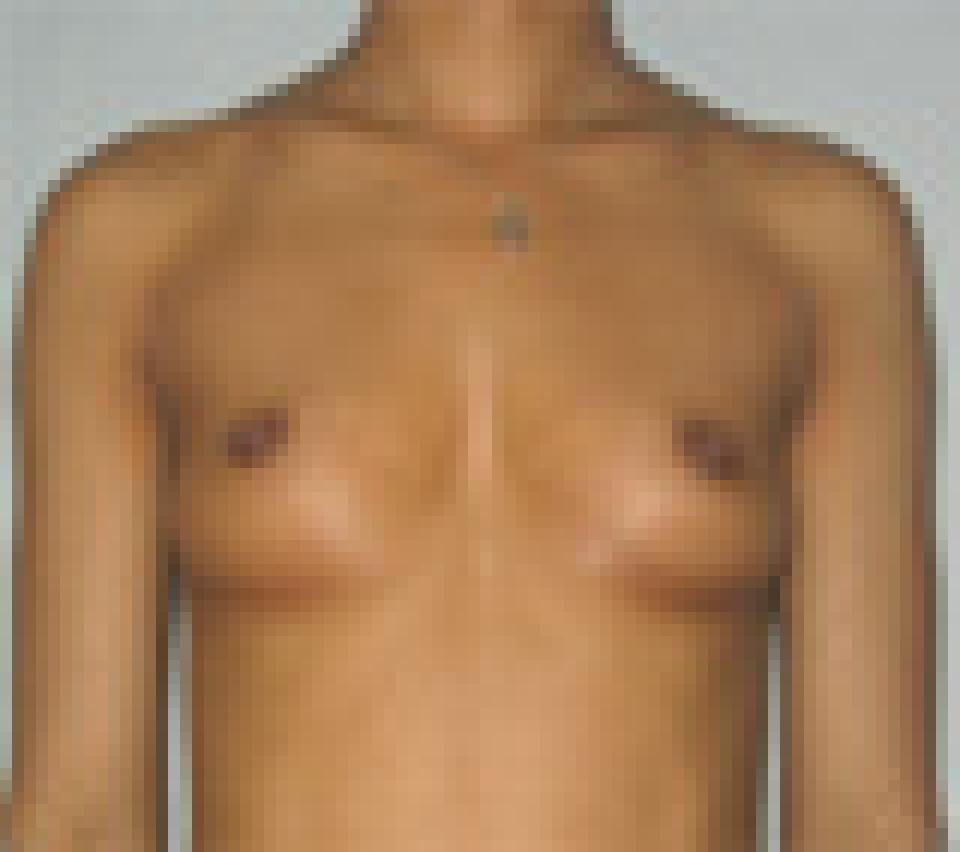 before
before
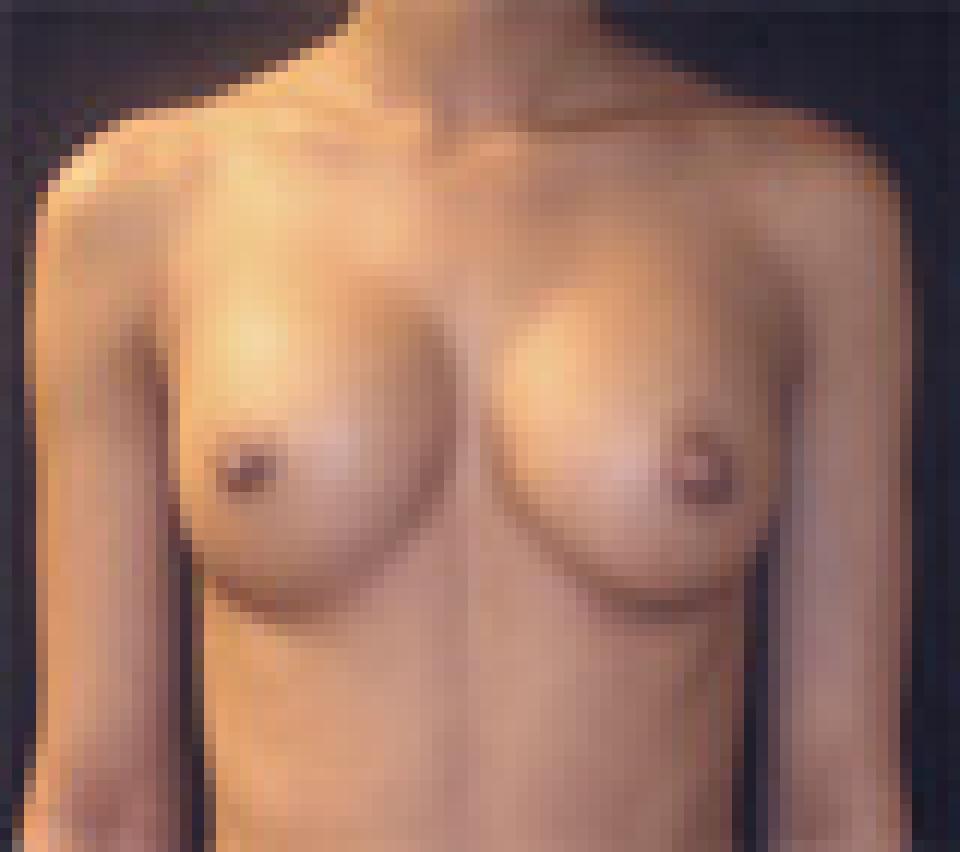 after
after
These following photographs depict a small framed 23 year old woman who wanted to have a larger and fuller bust. She underwent breast augmentation with 280 cc smooth, round saline implants.
The implants were placed beneath her pectoralis muscles through incisions in the axilla.The trans-axillary incision is a good option for a woman who wants no incisions on the breasts. The incision is usually placed in an existing fold in the axilla, minimizing its perceptibility after surgery.
The post-operative photographs depict her at approximately 6 months after surgery.
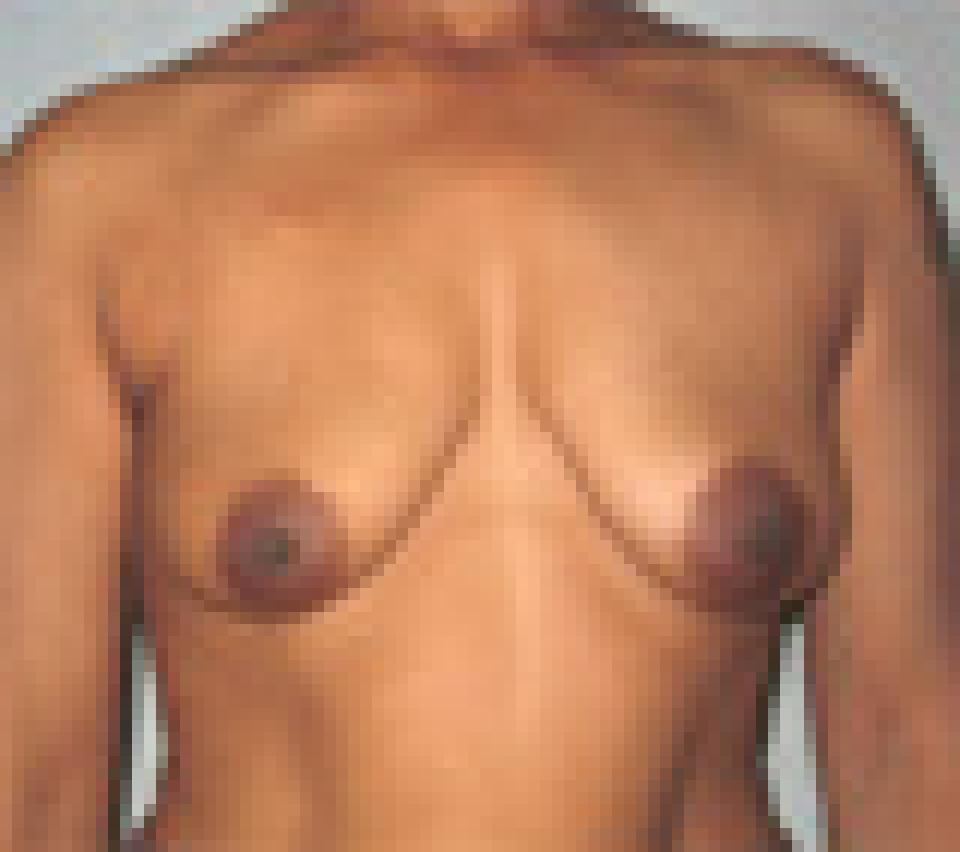 before
before
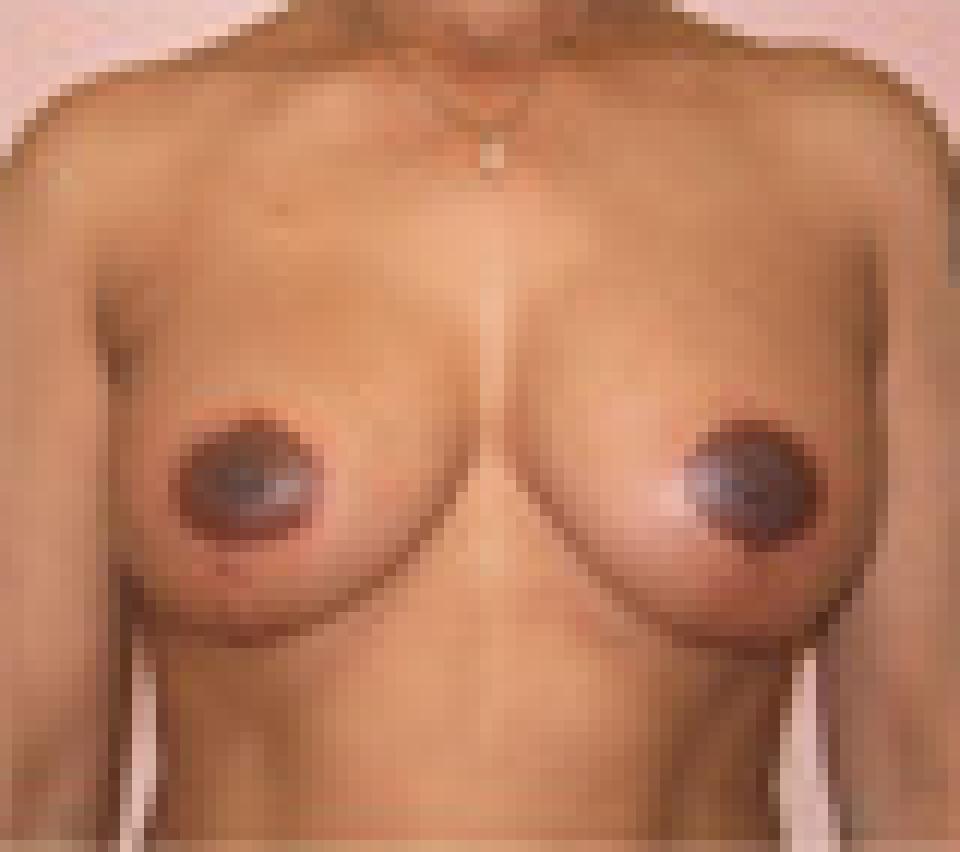 after
after
This case depicts a 47 year old woman who had borne two children and felt that her breasts had developed a sagging and deflated appearance.She underwent a vertical or "lollipop" incision breast lift along with placement of 300 cc smooth, round saline implants beneath the pectoralis muscles.
Her post-operative photographs depict her appearance approximately two months after surgery.This procedure also involves reduction of the areolas as needed in order to create a balanced and aesthetically attractive appearance. Asymmetries between the breasts can often be significantly improved as well.
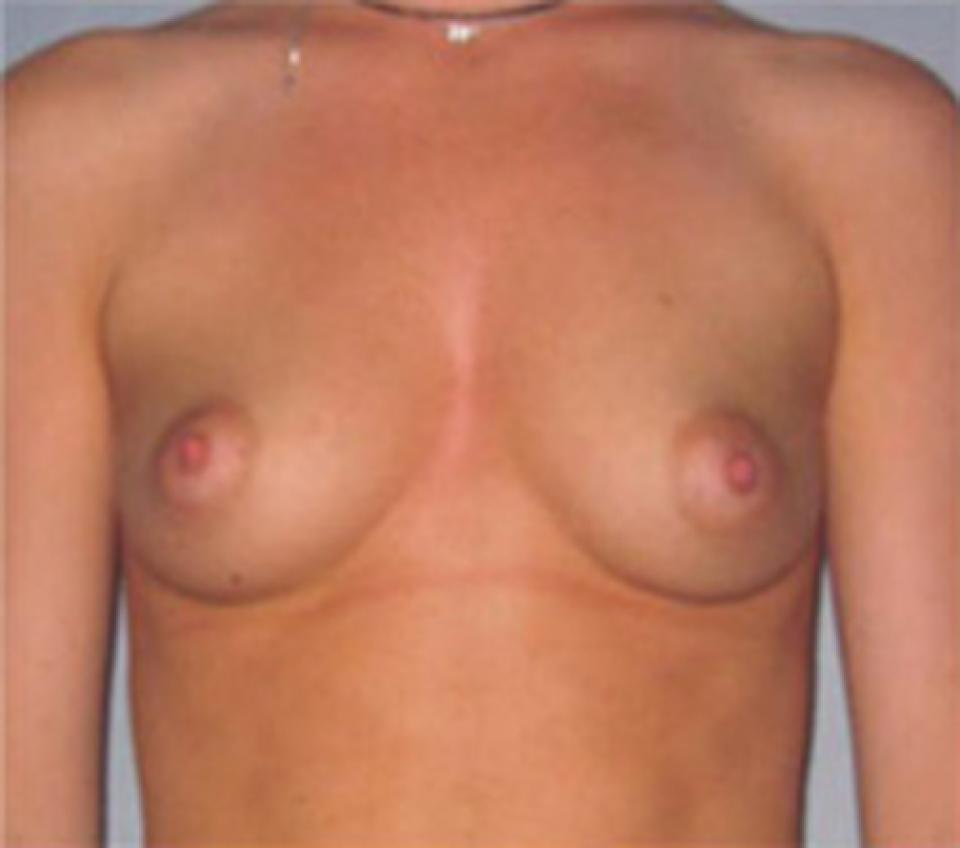 before
before
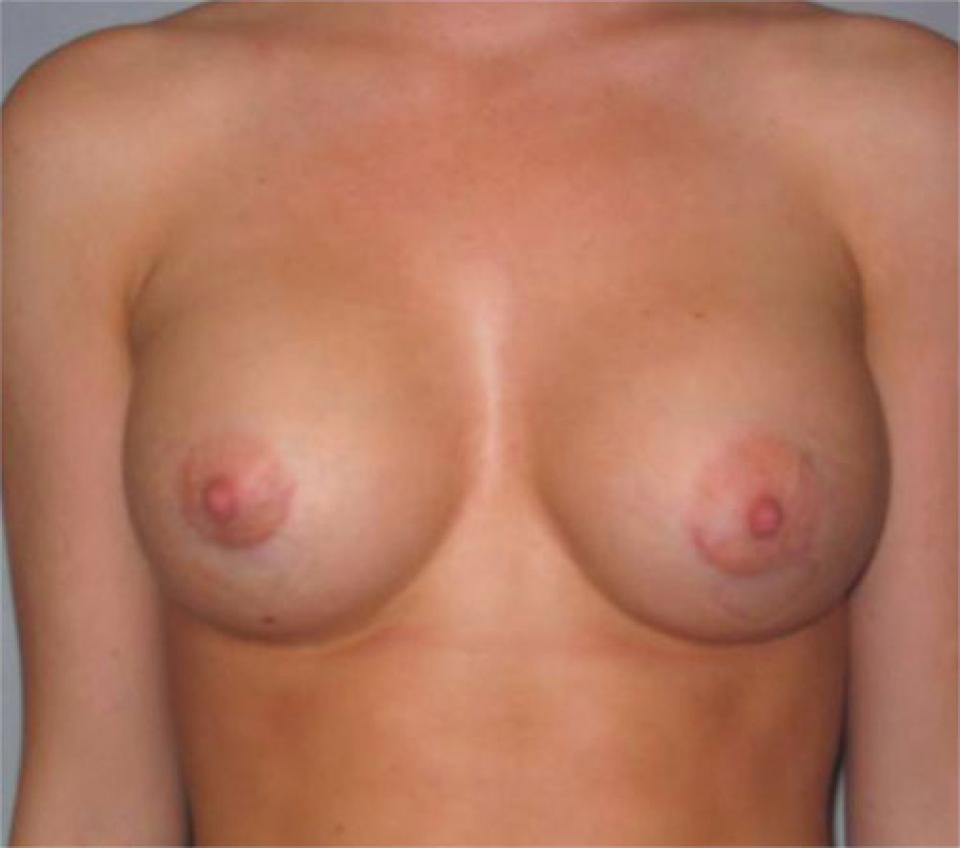 after
after
The following photographs depict an 18 year old woman who wished to have a larger and fuller bust. She underwent breast augmentation with smooth, round 330 cc saline implants.The implants were placed beneath her pectoralis muscles using incisions placed within the areolas.
The post-operative photographs depict her at approximately 6 months after her surgery. Peri-areolar incisions can heal nearly imperceptibly. They are hidden in virtually all fashions and swimwear. Dr. Belsley can place either saline or silicone implants through this type of incision.
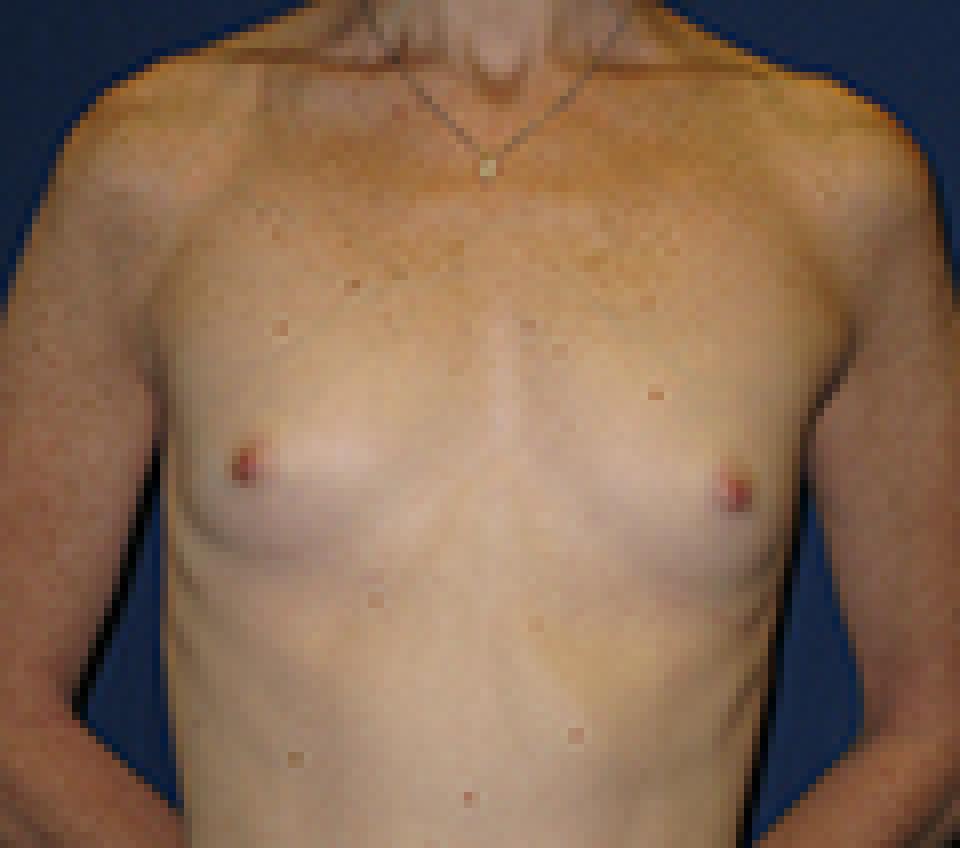 before
before
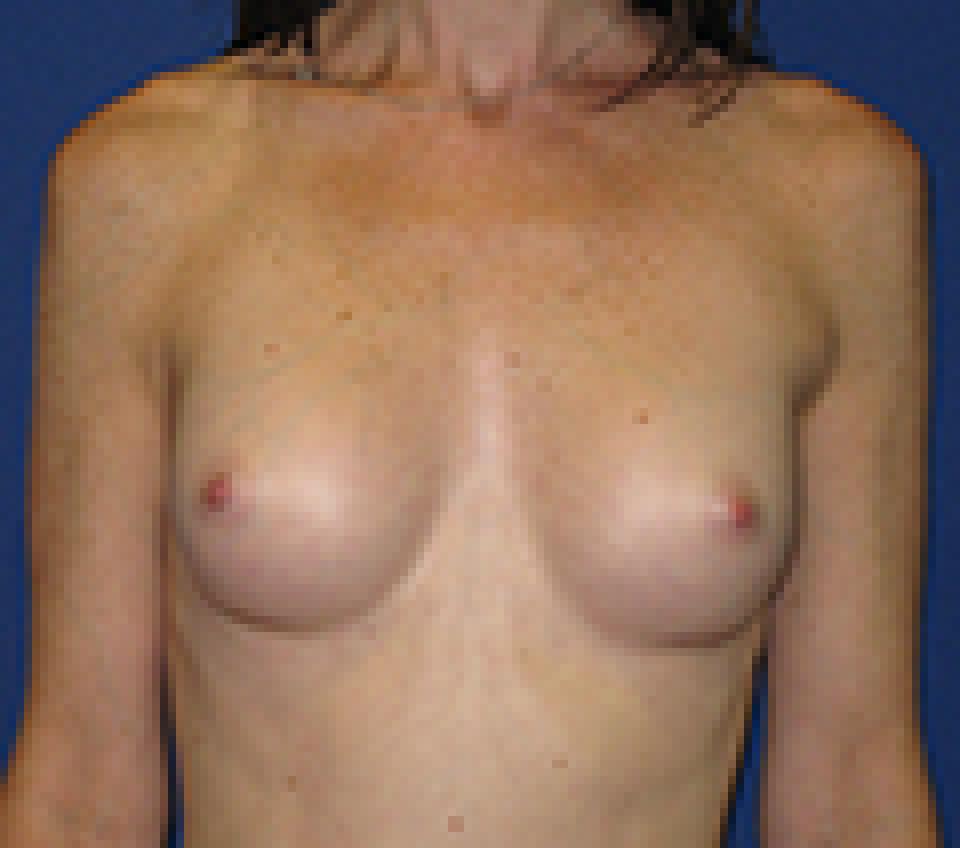 after
after
This 30 year old woman underwent breast augmentation using 180 cc silicone filled breast implants placed partially beneath the pectoralis muscle through an incision along the lower fold of the breast that measured 3 centimeters in length.
Implants can also be inserted through an incision on the edge of the areola, which is the dark colored skin surrounding the nipple. However, when an individual has very small areolas, such as this patient has, this is not possible.
On the other hand, if the areolas are too large or irregularly shaped, they can be resized and reshaped at the same time as a breast augmentation and/or a breast lift is performed. This will, however, result in a scar around the periphery of the new areola. Often, these scars can heal quite well and are less objectionable in their appearance than overly large or irreguarly shaped areolas.
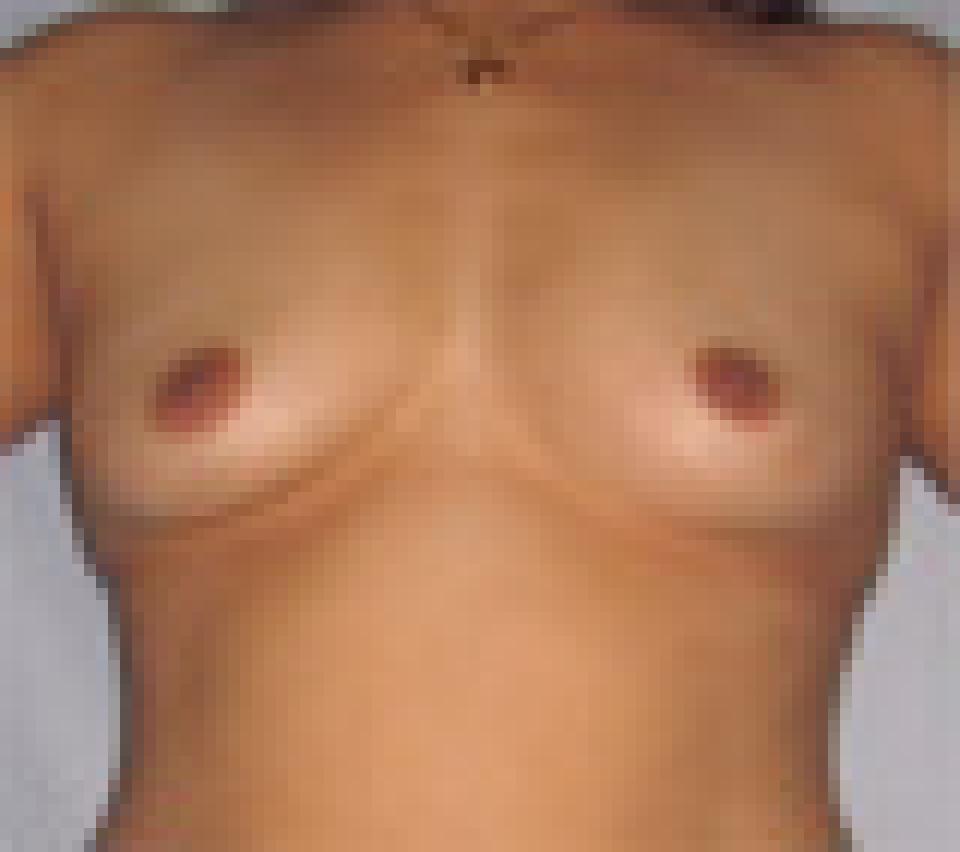 before
before
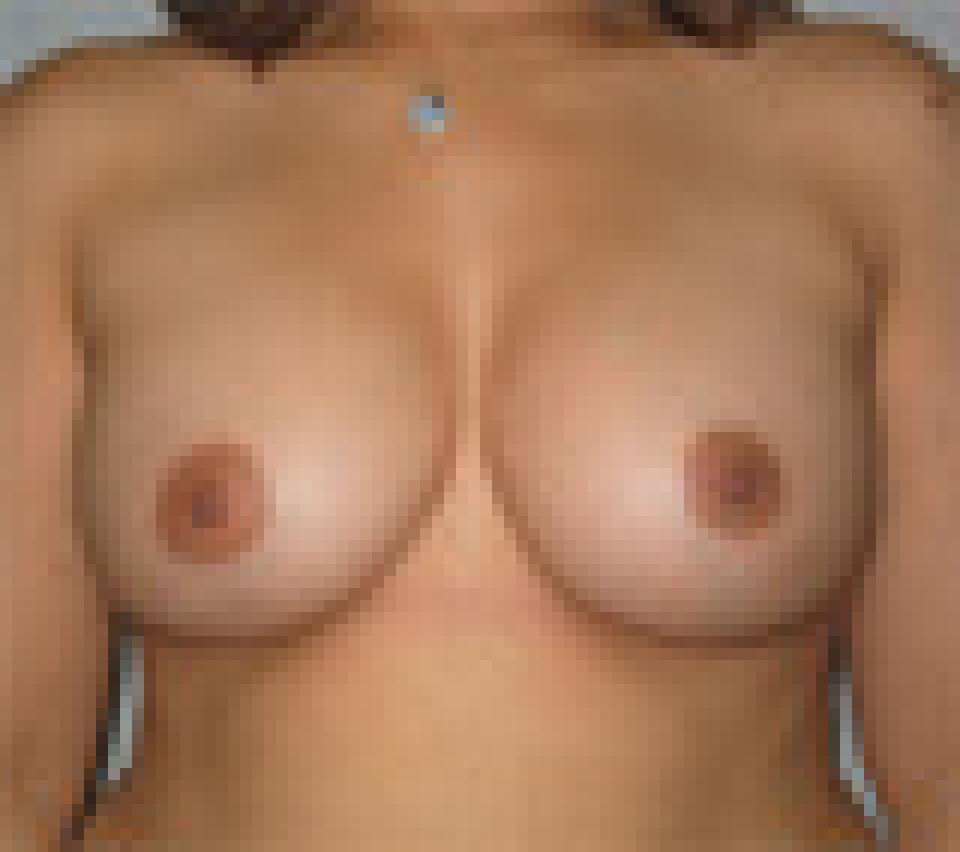 after
after
This case depicts a 40 year old woman who wished to have a larger and fuller bust.She underwent placement of 350 cc smooth, round saline implants. The implants were placed partiallly beneath her pectoralis muscles through an incision in the lower fold of the breast.
The post-operative photographs depict her at 3 months after surgery. The inframmamary fold incision is a particularly good option for women who have a well-developed breast fold before surgery. Because of this individual's anatomy, the incisions will be difficult to see at any angle.
 before
before
 after
after
This case depicts a 37 year old woman who had borne one child and had noted that her breasts had begun to sag and develop a deflated appearance.
She underwent a vertical or "lollipop" incision breast lift along with placement of 300 cc smooth, round saline implants beneath the pectoralis muscles. Her post-operative photographs depict her appearance approximately one year after surgery.
This case study also demonstrates how the nipple and areolar positions located too low and too close to the midline in this case, can be improved as part of the procedure.
 before
before
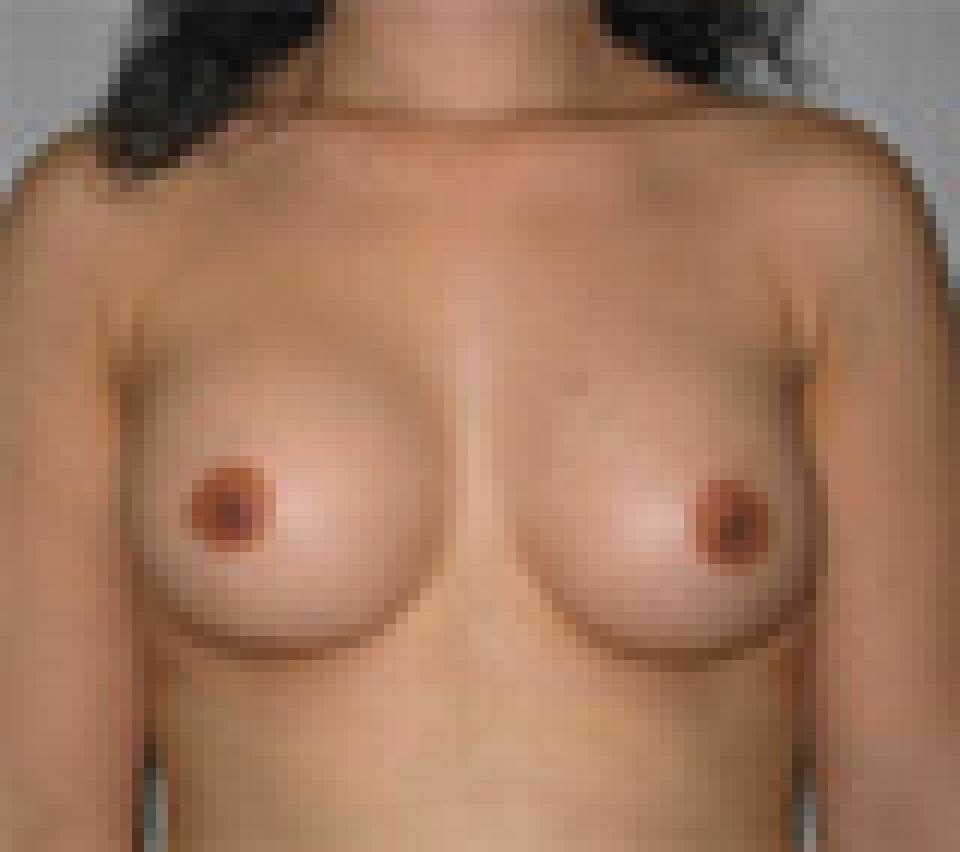 after
after
This case depicts a 29 year old woman who wished to have a larger and fuller bust. She underwent breast augmentation with smooth, round 350 cc saline implants.The implants were placed beneath her pectoralis muscles through an incision in the lower fold of the breast.
The post-operative photographs depict her at approximately 3 months after surgery. The infra mammary incision is a good option for women whose areolas are too small to undergo breast augmentation. Other options for such an individual include placing an incision in the axilla.
 before
before
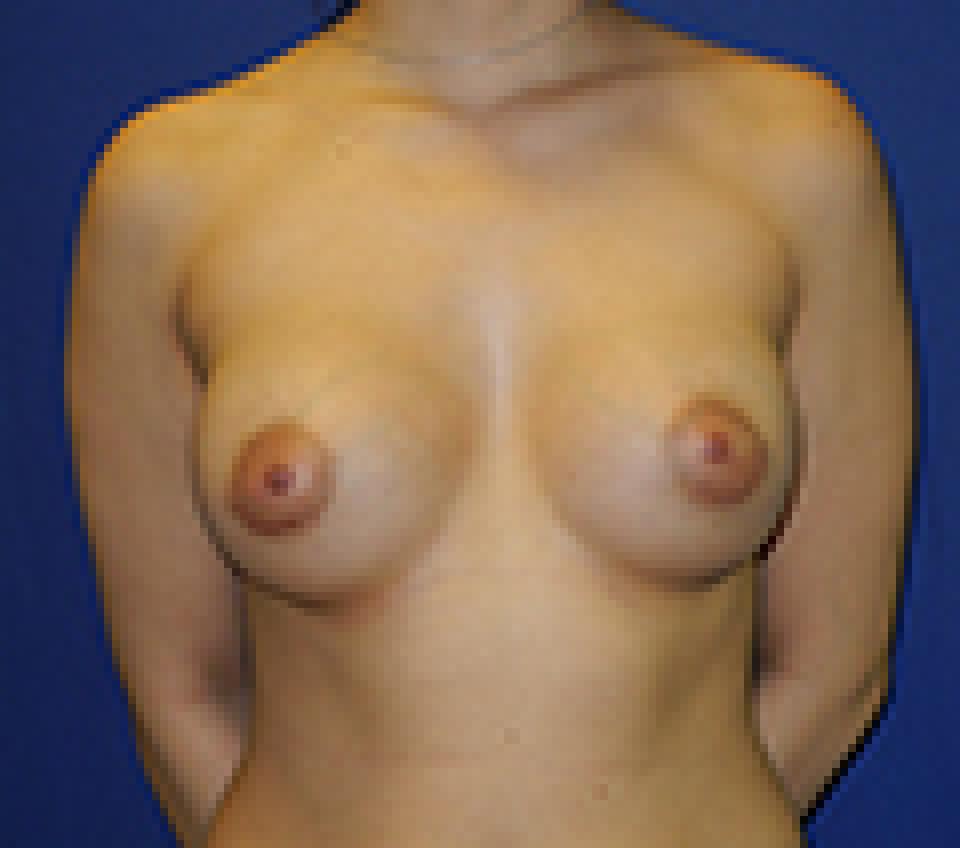 after
after
This 22 year old woman underwent bilateral augmentation mammaplasty using saline filled breast implants inflated to a volume of 320 cc’s place partially beneath the pectoralis muscle.
This individual wished to have the largest possible cup size while still appearing to have relatively natural breasts.
In my opinion, this implant size was the largest round implant that could be inserted, while still maintaining a natural appearing breast shape.
With the new anatomic shaped implants, which are shaped more like a teardrop, it is possible to achieve larger breast sizes and still maintain a natural shape.
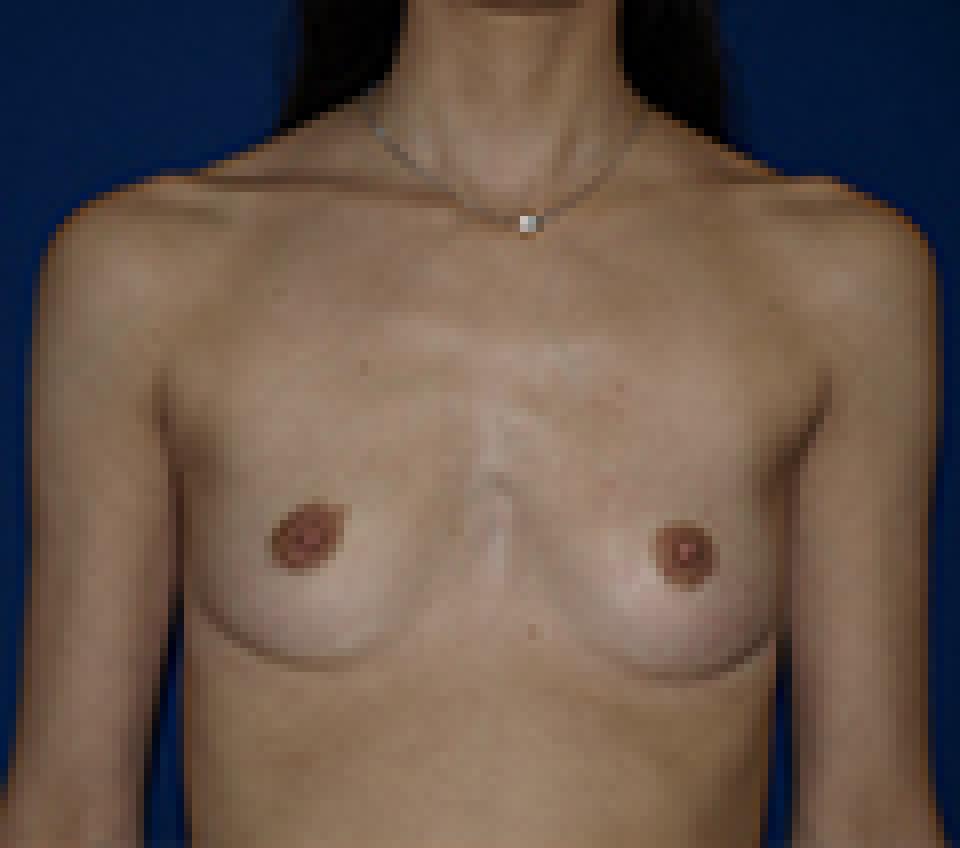 before
before
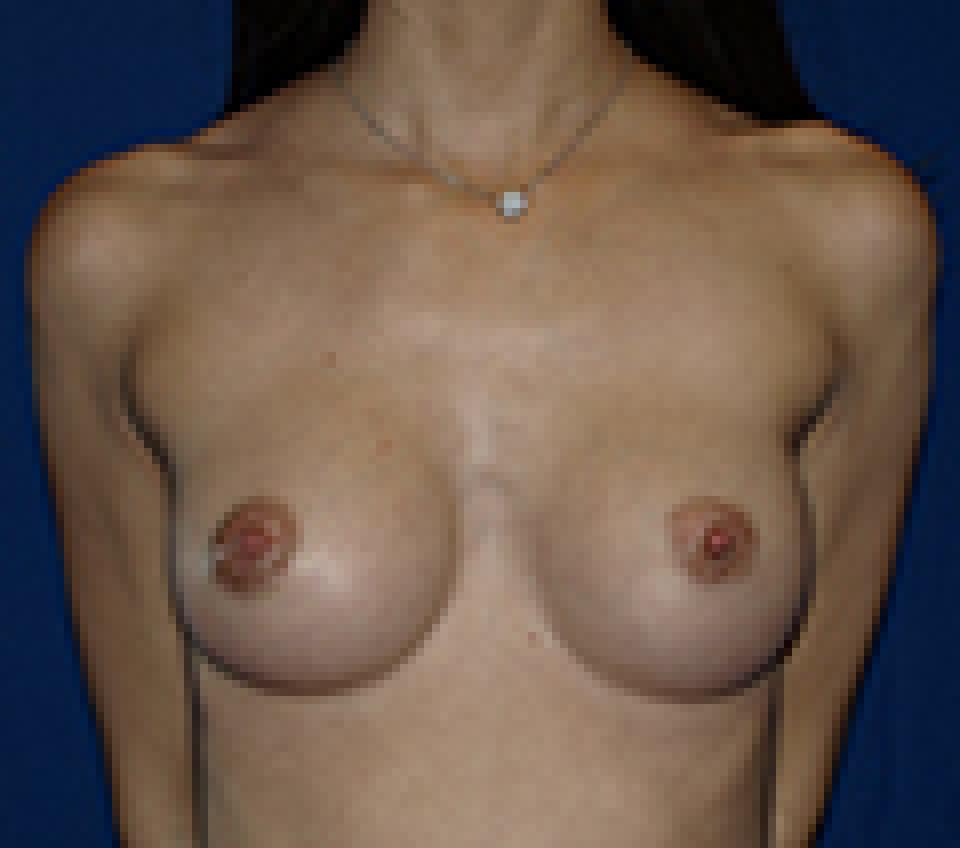 after
after
This 32 year old woman underwent breast augmentation using saline filled breast inflated to a volume of 195 cc’s and placed partially beneath the pectoralis muscle.
The individual has a mild pectus excavatum, a condition in which a person's breastbone is sunken into the chest. She also has a tendency to stand in a slightly kyphotic position, which means that her upper back is rounded and her head is relatively forward.
Obtaining a natural looking result in a patient who has pectus excavatum and postural abnormalities, as this individual has, can be challenging but is certainly possible.
In the case, the implants were inserted through a 3 cm incision at the lower border of the areola, which is the darker skin surrounding the nipple. These incisions typically heal quite well and can be difficult to see.
 before
before
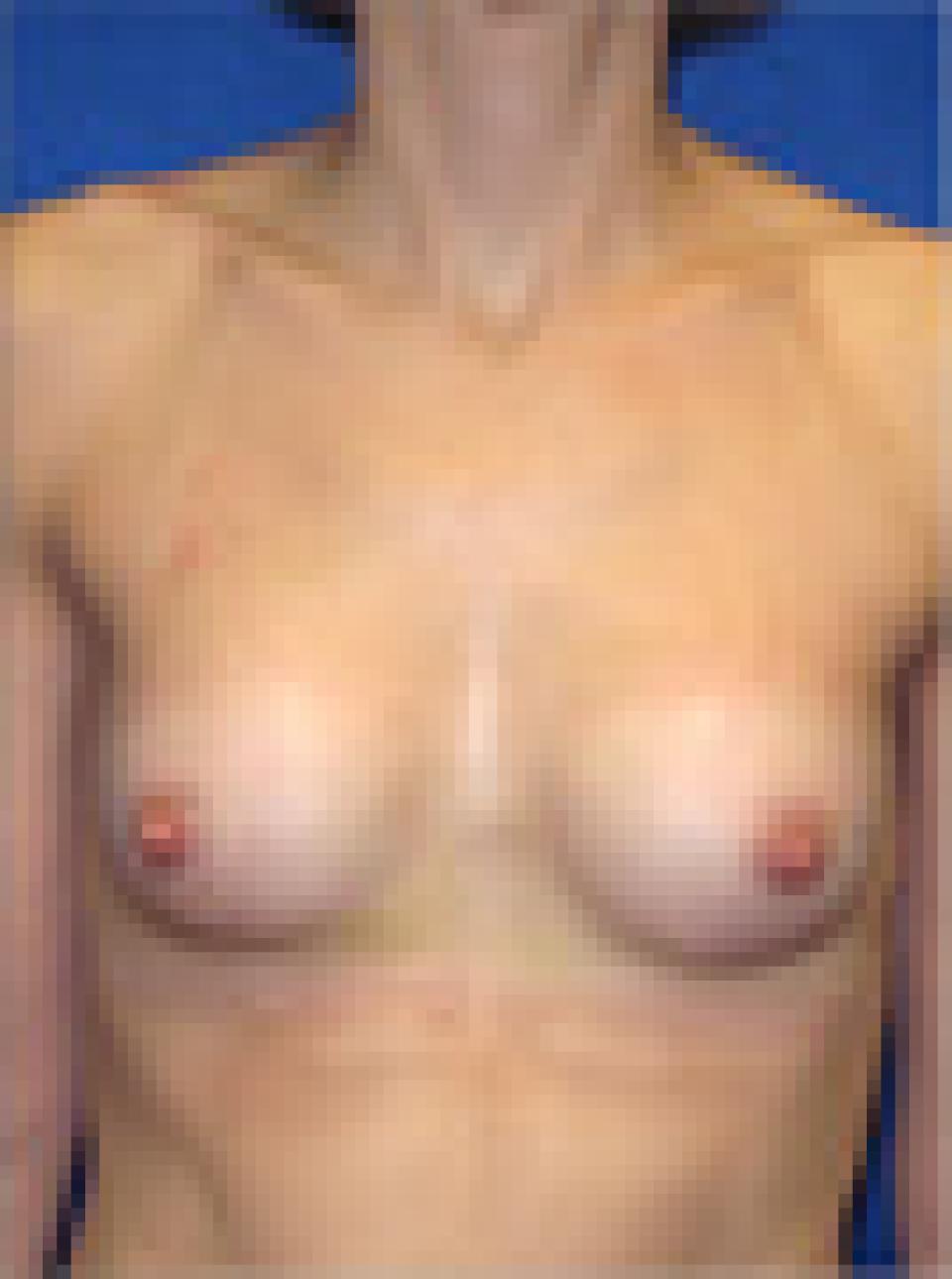 after
after
These photographs depict a 41 year old woman whose goals after surgery were to have more shapely but not overly large breasts, as her frame was small. She underwent breast augmentation with 158 cc smooth, round, silicone implants.
The implants were placed beneath her pectoralis muscles through an incision in the lower fold of the breast. The post-operative photographs depict her at just under 2 months after surgery. She wears a small B cup bra after surgery.
Dr. Belsley's Philosophy of Breast Augmentation
When it comes to deciding what approximate breast size you wish to achieve, the best advice I can give you is that you should be guided by your physical frame. Indeed, you may in fact be limited by it. In my practice, I select implants based upon your chest measurements, the quality of your breast skin and the size of your breasts prior to surgery.
I perform breast augmentation through a peri-areolar or inframammary approach and I place that vast majority of implants at least partially beneath the pectoralis muscle. My patients are welcome to select either saline or silicone filled breast implants. Silicone filled implants can in some cases achieve a more natural feel and may be a particularly attractive option for women with less breast tissue prior to surgery.
More >>Cosmetic breast augmentation is different from reconstruction
This procedure is distinct from “reconstruction” after an injury or removal of a breast. It is usually performed when the patient is dissatisfied with the size of her breasts, she may have been teased at school, or suffered negative comments from male companions, or may think she would “present” better in the job market if she had a better figure. As in all forms of aesthetic surgery, the surgeon must be aware of the patient’s expectations and psyche.